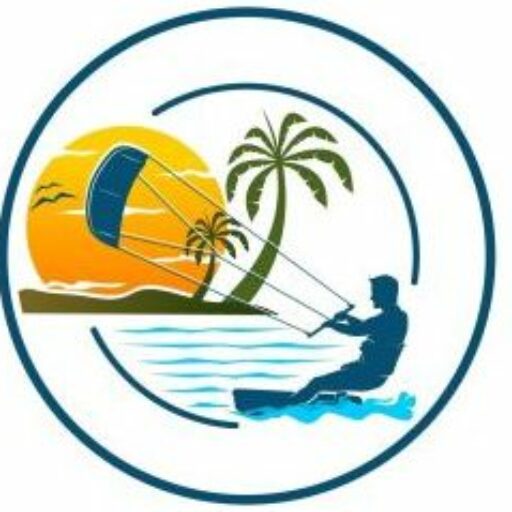This website uses cookies so that we can provide you with the best user experience possible. Cookie information is stored in your browser and performs functions such as recognising you when you return to our website and helping our team to understand which sections of the website you find most interesting and useful.
(Description and notes)
All information is relative and relates to the other kite designs described.
More precise angles and ratios can be derived from the 3D models.
It is generally difficult to divide all kites into fixed categories. Every designer has their own ideas about a kite and designs them accordingly.
The result can be an “all-rounder” that fits into multiple categories.
The selected categories therefore only serve as a guide, with the transitions being fluid.
The 3D models of the kites shown and used are for illustrative purposes only.
They are not suitable for reproduction.
For a direct comparison, all kites shown are shown with the same sail area (approx. 8.5 square meters) and the same angle of attack in the middle.
The side view shows some properties visually, where a rectangle corresponds to a length of 10 cm.
Barweg (travel of the bar) for an angle of attack change of 20 degrees
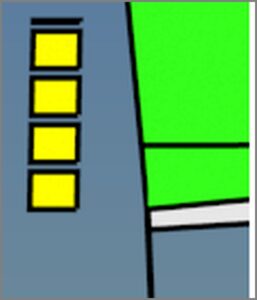
Reserve of the center of gravity
Reserve of the neutral point

The Freeride Kite
Path of the bar – center of gravity and neutral position visualized
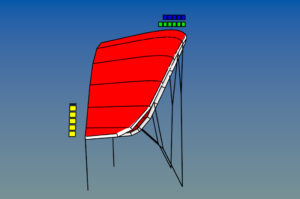
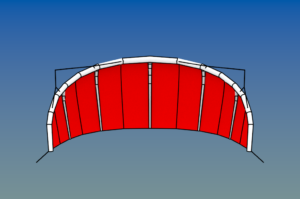
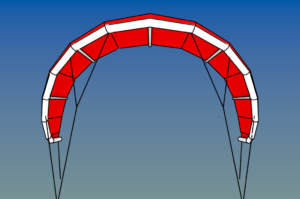
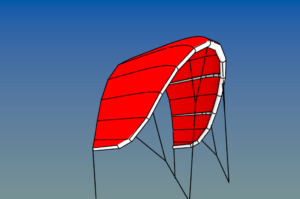
Characteristics
- Good-natured flight behavior with no tendency to front stall or back stall
- Simple relaunch
- Medium bar forces + medium rotation speed
- Easy jump
- Good hang time
- “Sheet and go”, i.e. pulling up the bar is usually enough for the water start
- Clearly noticeable depower behavior
- Good upwind properties
- Due to the slightly lower position in the wind window, it is a little more difficult for light kiters to maintain altitude as the kite pulls to leeward
Design features
- Significant sweeping back of the leading edge for easy water starting, pleasant bar feel and medium turning speeds.
- Medium wingspan and medium height for balanced flight behavior and good low end.
- Larger diameter of the front tube for high stability, a slightly lower stance in the wind window and good low end.
- Slightly thicker profile for good propulsion even at low flight speeds.
- Greater distance between neutral point and control lines for linear depower behavior.
- 3-5 struts for good stability even for heavy kiters.
- Medium aspect ratio for good-natured flight behavior and good performance.
- Higher taper for better performance thanks to more sail area in the center.
- Average distance between the neutral point and the attachment point of the front lines for noticeable bar forces and avoidance of front stall.
- Due to the thicker front tube and the thicker profile, the high-end isn’t quite as good.
- Due to the significant sweeping back of the leading edge, the bar path is no longer sufficient for 100% depower from a suitable kite size. The kite must be tied to the control lines or front lines.
The Delta Kite
Characteristics
The Delta Kite is a variant of the freeride kite and has its features. It tends to be a bit more like a wave kite.
An exact demarcation is not possible.
Freestyle Kite (C-Kite)
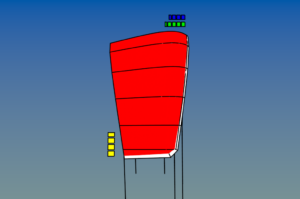
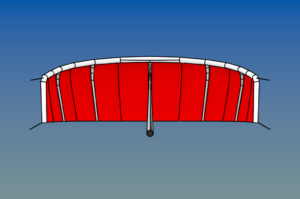
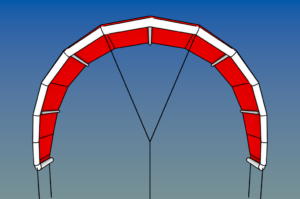
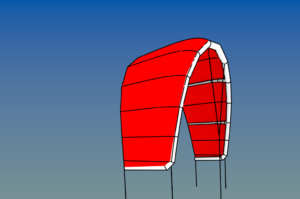
Characteristics
- Very direct flight behavior
- High rotation speed
- Little depower
- Explosive pull when taking off
- Strong reduction in traction after the jump
- Difficult relaunch
- Poor upwind properties
- Low position in the wind window
- Even with strong pull (e.g. jump) the kite remains low in the wind window and does not shoot forward (permanent pull on the lines)Stall at Pop and “Parachute Effect”
Design Features
- Very little sweeping back of the leading edge so that the neutral point and attachment point of the front lines are close together.
- This ensures constant tension on the front lines and eliminates the need for scales.
- Little wingspan but lots of height for high rotation speed.
- Slight taper for a lot of surface area in the tips.
- At least 5 struts for a stable profile, especially towards the tips.
- Short distance from the neutral point to the attachment points for high bar forces, high rotation speed and clear feedback.
- 5. Leash for additional support of the leading edge, low depower and as safety.
- Small leading edge diameter and thin profile for high airspeed.
- High angle of attack for low position in the wind window.
The Wave Kite
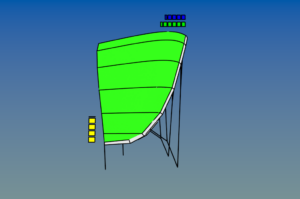
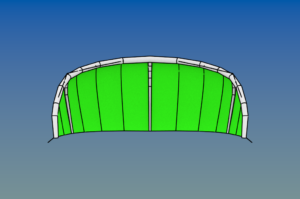
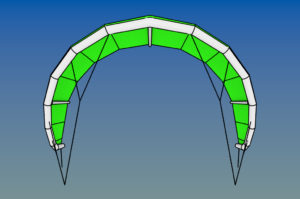
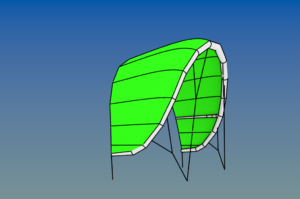
Characteristics
- High rotation speed
- No stall if the lines are not tensioned, the kite drifts along
- Very good depower behavior, only minimal pull when the bar is pushed completely away
- Very quick relaunch
- High acceleration in the corners
- Good upwind properties
- Slightly more demanding flight behavior due to the rotation speed and the depower behavior
- Low bar forces
- Low weight for good drift
- Easy to control when depowered
Design Features
- Short control line lever arm for high rotation speed even when depowered
- Short distance from neutral point + front lines for low bar forces and a lot of depower
- Thin profile for high speed and acceleration
- High point for a lot of space in the center
- Center of gravity close to the neutral point
The Race Kite
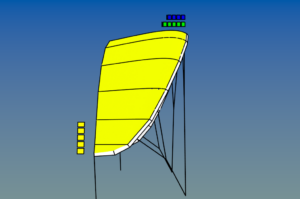

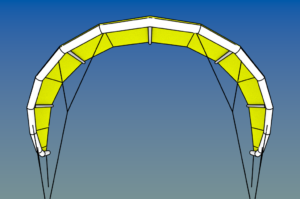
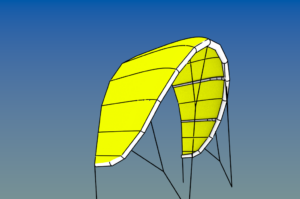
Characteristics
- High draft even with little wind
- Maximum propulsion
- Always flies very far forward in the wind window
- Instantly converts gusts of wind into forward pull
- Quiet flight behavior, low turning speed
Design Features
- Leading edge diameter as thin as possible for low drag
- High point for a lot of sail area in the middle area
- High aspect ratio for low induced resistance
- Low angle of attack for positioning far forward in the wind window
- Angle of attack optimized across the entire wing
- More struts (5-6) for stable profile progression
The Bow Kite
We only mention the Bowkite here because it represents a decisive advance in the development of kites from the early two-line kites to modern kites.
With the Bowkite, kitesurfing became much easier and safer, as it was now possible to unload the kite using the bar and thus regulate the pulling force.
In addition, restarting the kite was much easier compared to the usual C-kites.
Currently no manufacturers offer typical bowkites with the characteristic flight characteristics.


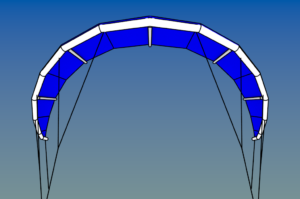
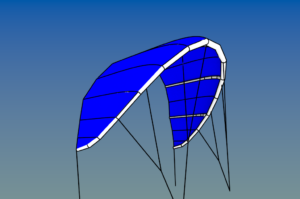
Characteristics
- Good performance even with little wind
- Good-natured flight characteristics
- Very good hang time
- Simple relaunch
- Indirect control behavior, low rotation speed
- Very long depower path, 100% depower not possible
Design Feature
- A very strong backsweep of the leading edge and thus also of the entire sail makes it possible for the kite to rotate around the transverse axis (depowering).
- That was the big change compared to the usual kites up to that point.
- The strong sweeping back of the leading edge results in several side effects:
- The leading edge becomes very long and has to be stabilized with lots of bridle lines
- For an even distribution of force when rotating around the transverse axis (depowering), many rollers are required in the bridle lines due to the large vertical path of the attachment points
- Due to the connection points of the control lines being far back and the resulting leverage ratios, the bar travel is no longer sufficient for 100% depower, so that some gear ratios had to be installed in the bar
- Strong intensification for a lot of space in the center
- High projected wingspan
- Many struts to stabilize the sail
Source & pictures: www.wingworks.de
